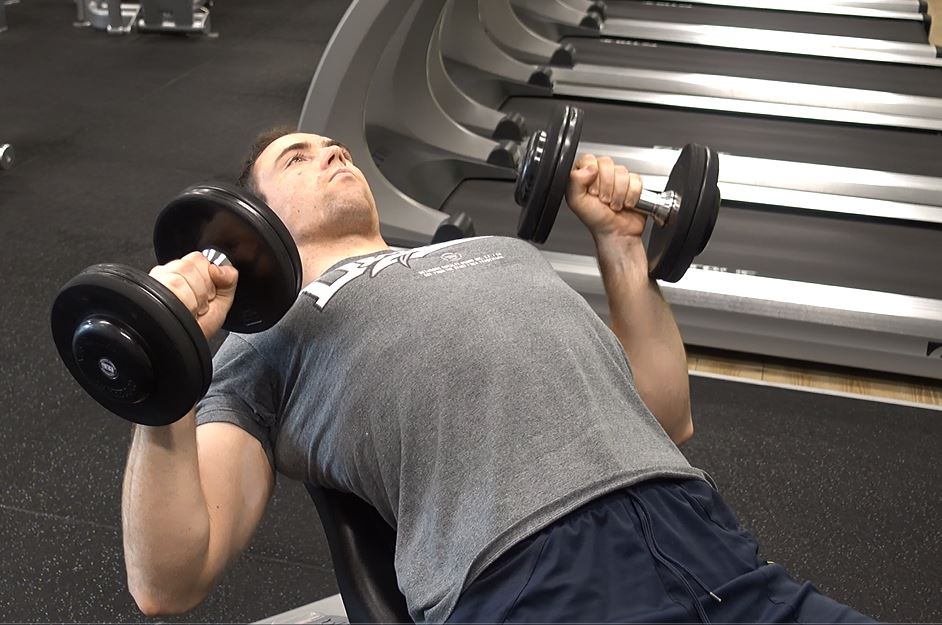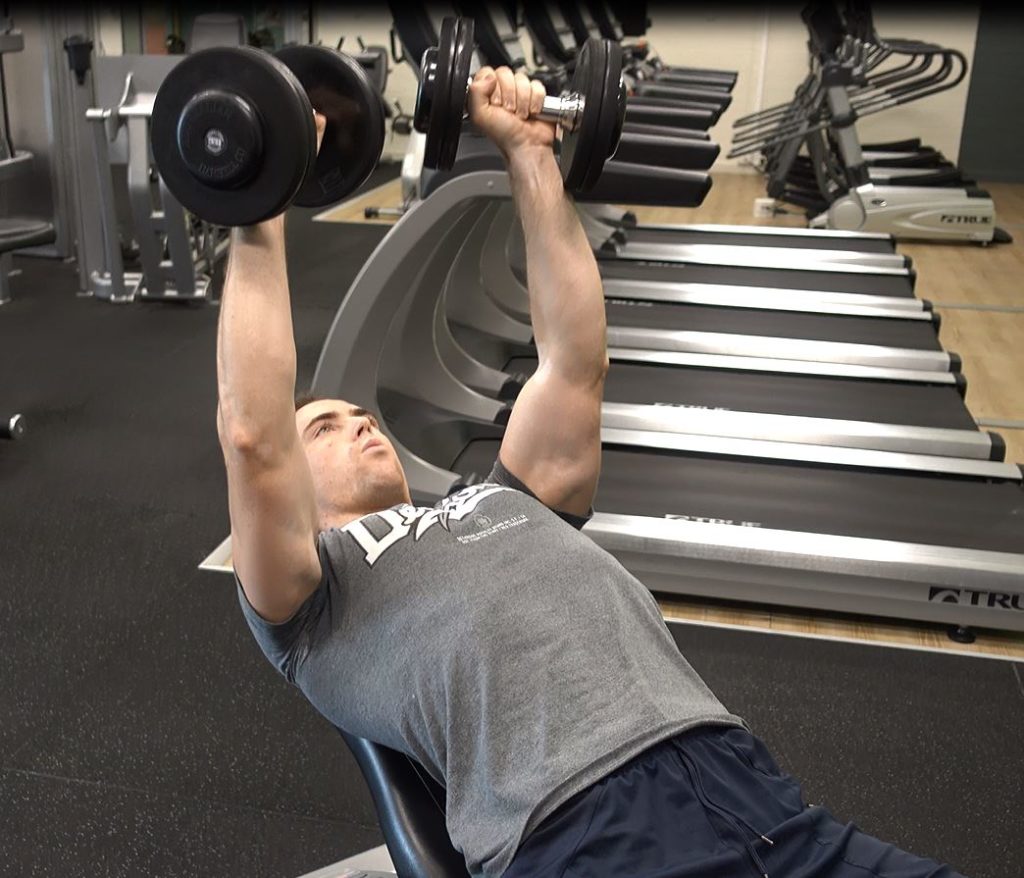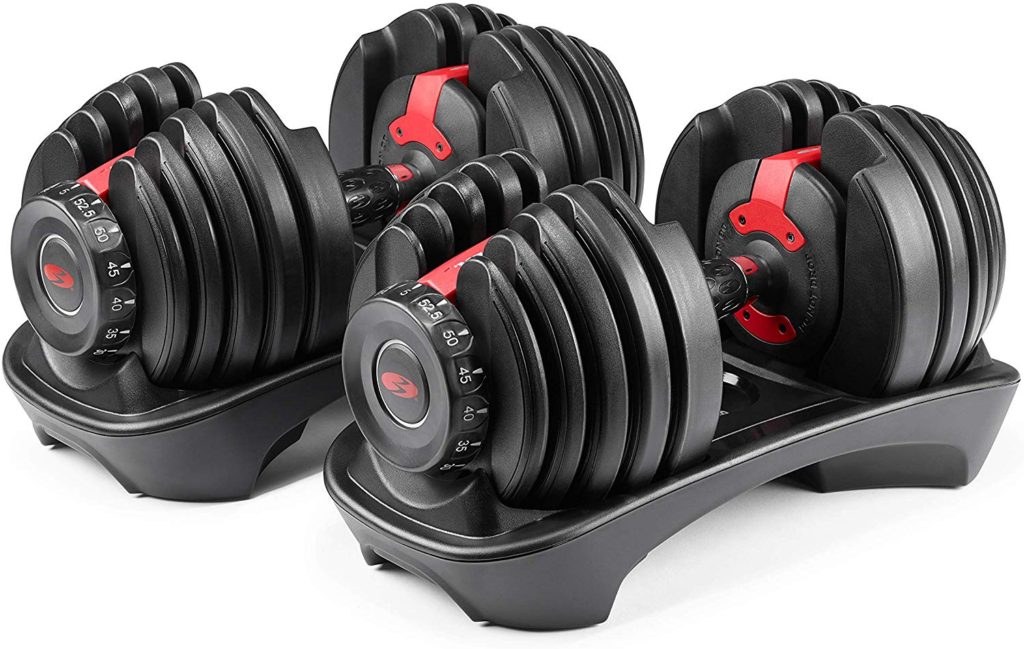Incline Dumbbell Bench Press
The incline dumbbell bench press is an excellent exercise to add mass and build strength in both the chest and triceps.
Although the barbell variation of the incline bench press is seen as the most popular variation of the chest press there's a few advantages of performing the incline dumbbell bench press as opposed to the incline barbell bench press... these include:
Range of motion
When pressing a barbell the barbell is always above your chest, there's only so low that the barbell can be lowered.
Dumbbells on the other hand can be moved around the body, resulting in a far deeper range of motion and a better stretch and contraction in the chest.
No spotter required (safer)
Lifting heavy with dumbbells? No problem.
Unlike the barbell variation in which you're always running the risk of getting the barbell stuck ontop of you when it comes to dumbbells because they're by your side as opposed to ontop of you they can easily be released, exiting the set should things not go your way.
Less chance of shoulder injury
I have seen far more guys injure their rotator cuffs and shoulders as a result of poor form and flaring of the elbows from the barbell variation of the bench press in comparison to the dumbbell bench press.
Movement: Compound
Targets: Chest
Required: Dumbbells & Bench
Optional: N/A
Incline Dumbbell Bench Press Form:
Sit on an incline bench with a dumbbell in each hand. Rest the dumbbells on your thighs with your palms facing each other.
Using your thighs kick the dumbbells up one at a time.
Once the dumbbells have been loaded into place rotate your wrists until your palms are facing away from you.
The dumbbells should be just to the sides of your chest, with your upper arm and forearm creating a 90 degree angle.
While exhaling use your chest to drive the dumbbells up. Lock your arms at the top of the lift and squeeze your chest and triceps, hold for a second and then begin coming down slowly until the dumbbells are just shy of touching your chest.
Incline Dumbbell Bench Press Variations
Unilateral Incline Dumbbell Bench Press
Instead of pressing with two dumbbells the unilateral incline dumbbell bench press will have you holding and pressing one dumbbell at a time.
This is a fantastic core exercise and is often used for overcoming a lagging side/correcting dominance.
You'll find when pressing one dumbbell at a time your core will need to be engaged the whole time to maintain your position on the bench, with the weight of the dumbbell you'd normally press being reduced significantly.
Flat Dumbbell Bench Press
Utilizing the same form described above, the only difference here is you'll be performing your dumbbell bench press on a flat bench. this angle will ensure you're utilizing the entire chest (as incline places more emphasis on the upper chest).
Decline Dumbbell Bench Press
Utilizing the same form described above, the only difference here is you'll be performing your dumbbell bench press on an decline bench (ideally around the 45 degree angle) this will utilizing more of the lower chest - as the range of motion is limited on the decline dumbbell press you can lift substantially heavier than the flat or incline variations.
Here Are The ONLY Pair of Dumbbells I'll Ever Recommend...
Bowflex SelectTech Adjustable Weights
Instead of buying multiple sets of dumbbells or messing around screwing weight plates on and off your dumbbells between sets and exercises the Bowflex adjustable dumbbell makes progressing with your routine and exercise so much easier and efficient.
Adjustable in 2.5lb increments all the way up to 52.5lbs per dumbbell, ideal for the beginner or intermediate gym-goer
You can invest in a pair of these dumbbells that'll last you forever here.
Common Incline Dumbbell Bench Press Mistakes
Utilizing A Partial Range Of Motion
There's no reason to work in a small range of motion on your decline bench press, opt to lower the bar ALL the way down to your chest before driving through the chest until they're locked out at the top of the movement.
Partial range of motion = partial chest activation.
Bouncing The Weight
As you lower the weight down to your chest you must remain in control at times.
This means lowering the bar, pausing for a second just above your chest before driving the barbell back up - if you're using momentum to bounce the weight off your chest you'll be shooting yourself in the foot as this momentum takes tension off the chest.
No tension on the chest = no progress!
Flaring Your Elbows Out
When performing any pressing exercise, whether it be a dumbbell press or a decline barbell press it’s imperative you keep your elbows tucked in by your sides.
Flaring your elbows outwards is often a sign that the weight is too heavy (as you’re trying to muscle the shoulders in to assist with moving the weight).
Flaring the elbows on both chest and triceps exercise places your shoulders at a high risk of injury not to mention you’re only going to applying a small amount of tension to the chest as the shoulders are trying to take over and lift the weight.
If you find yourself constantly flaring your elbows lower the weight and consciously practise tucking your elbows in to your side on each repetition until it becomes natural.
Lifting Too Light
If you don’t generally train in the lower rep range I recommend you give it a try, stop lifting in the 10 – 15 rep range for at least a month and focus on heavy, low rep sets. Once you start to see results you won’t want to go back.
Now, you may still think high reps are beneficial, but let me tell you they’re far from it.
High repetitions result in increased stress on your CNS, increase in localized inflammation and increased soreness.
“Movements or exercises that do not give the muscle the required resistance, but are the kind that involve a great number of repetitions, never break down any tissue, to speak of. These movements involve a forcing process that cause the blood to swell up the muscle, and simply pump them up”– George F. Jowett, 1926
Similar & Substitute Exercises
- Incline Barbell bench press
- Chest Dips
- Weighted Push-Ups


